How to Teach the Floss Rule + FREE Word List and Chart
This post may contain affiliate links. As an Amazon affiliate, we earn from qualifying purchases.
Learn all about the FLOSS rule and how to use Science of Reading-aligned methods to teach it to students. Download and print a FREE word list & FREE anchor chart to help your instruction stick!
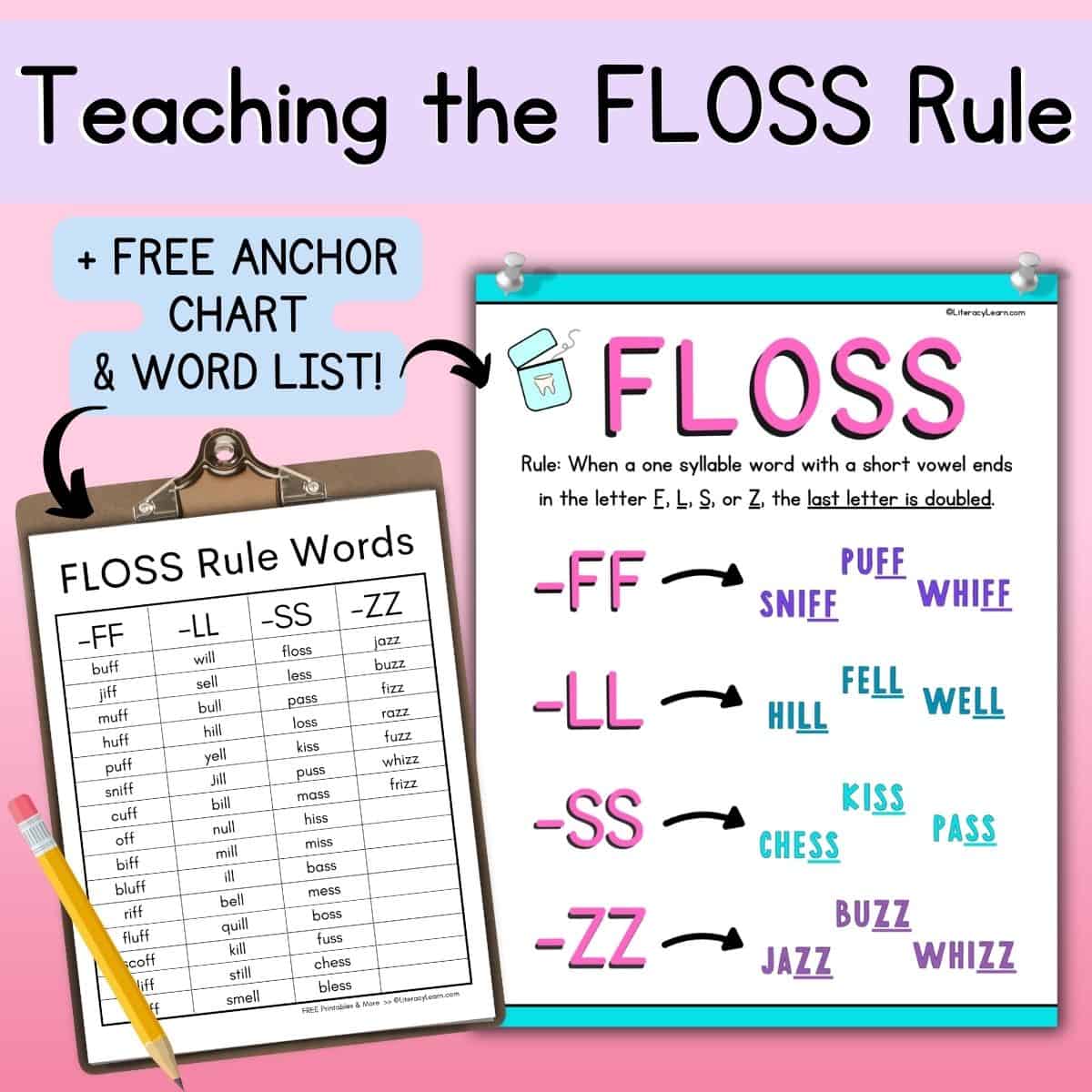
What Is the FLOSS Rule?
👉 The FLOSS rule is a spelling generalization that says when a one-syllable word with a short vowel ends in the letter F, L, S, or Z, the last letter is doubled.
Words like huff, bell, moss, and buzz are all examples of words following the FLOSS rule.
👉 Why is it called the FLOSS rule? The word FLOSS is a helpful mnemonic device that helps kids remember which letters are commonly doubled (F, L, S). It also serves as an example of a FLOSS word since the ending SS is doubled.
You may notice that the letter Z is not included in the word ‘floss.’ Some teachers teach this as a Floss+Z Rule (pronounced “flossy”), but only a handful of words include a double z at the end.
The floss rule is sometimes referred to as the 1-1-1 rule (one syllable, one short vowel, ends in one consonant sound.) If the consonant sound is s, l, f, or z, it is doubled.
It’s also important to note that this is different from the 1-1-1 Doubling Rule for spelling words with vowel suffixes. Floss words don’t need to be doubled before adding a vowel suffix. Why? Because they don’t end in one consonant.
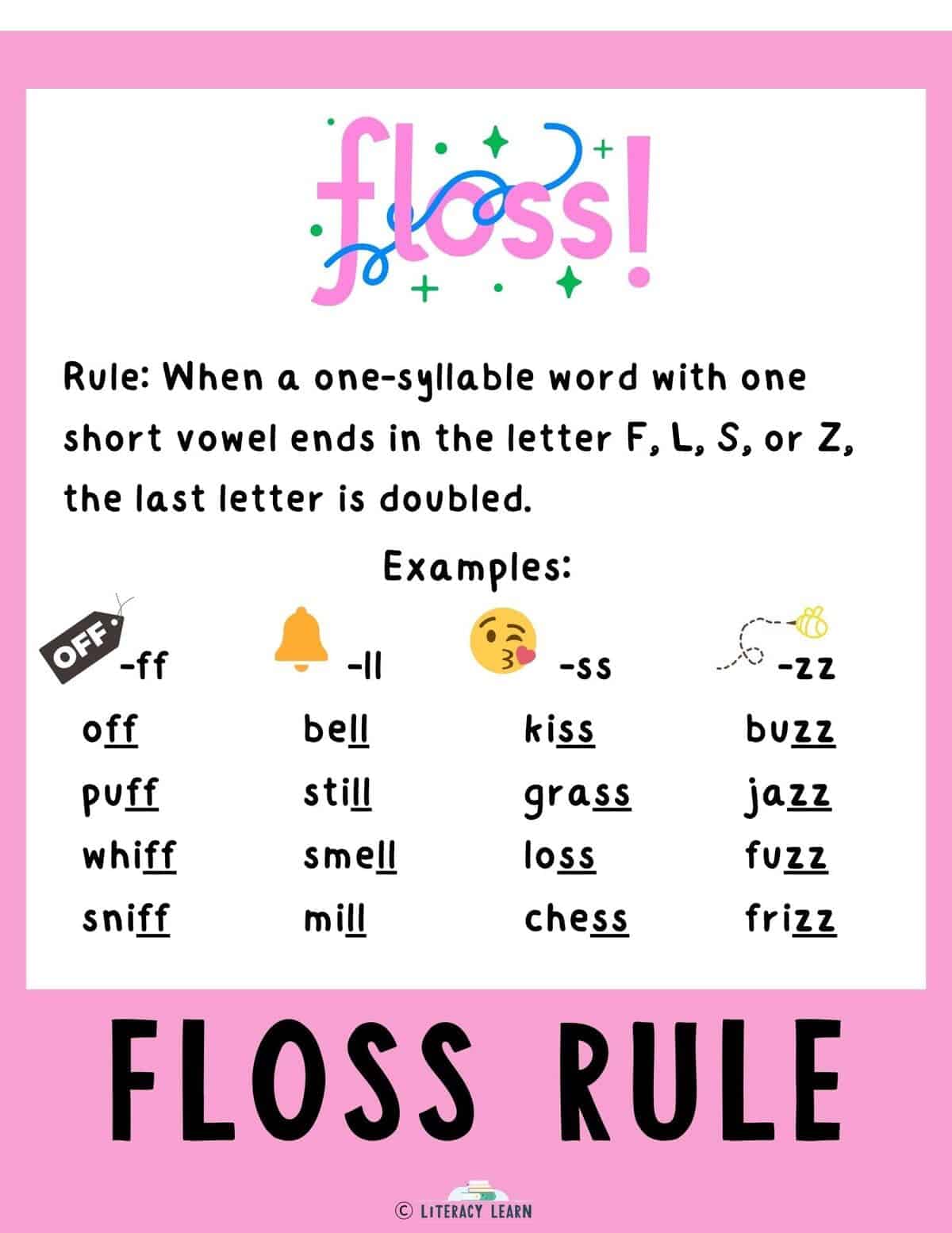
How to Teach the FLOSS Rule
As teachers, making phonics instruction fun and engaging is so important. Well, the FLOSS rule makes it easy!
Step 1: Kick things off with the Floss Dance!
I always start out by telling my students they’re going to learn a new spelling generalization, and then I immediately turn on some tunes and start doing the Floss Dance.
Most of the kids already know the dance and want to join in the fun for a few minutes! But we aren’t dancing just to have a good time (although it’s a lot of fun!).
Your students will become more engaged in the learning process when we include an enjoyable activity, plus we’re incorporating a multi-sensory approach to learning the rule. This helps the instruction stick!
💃🏼 Need to learn how to do the floss? Watch a Floss Dance tutorial!
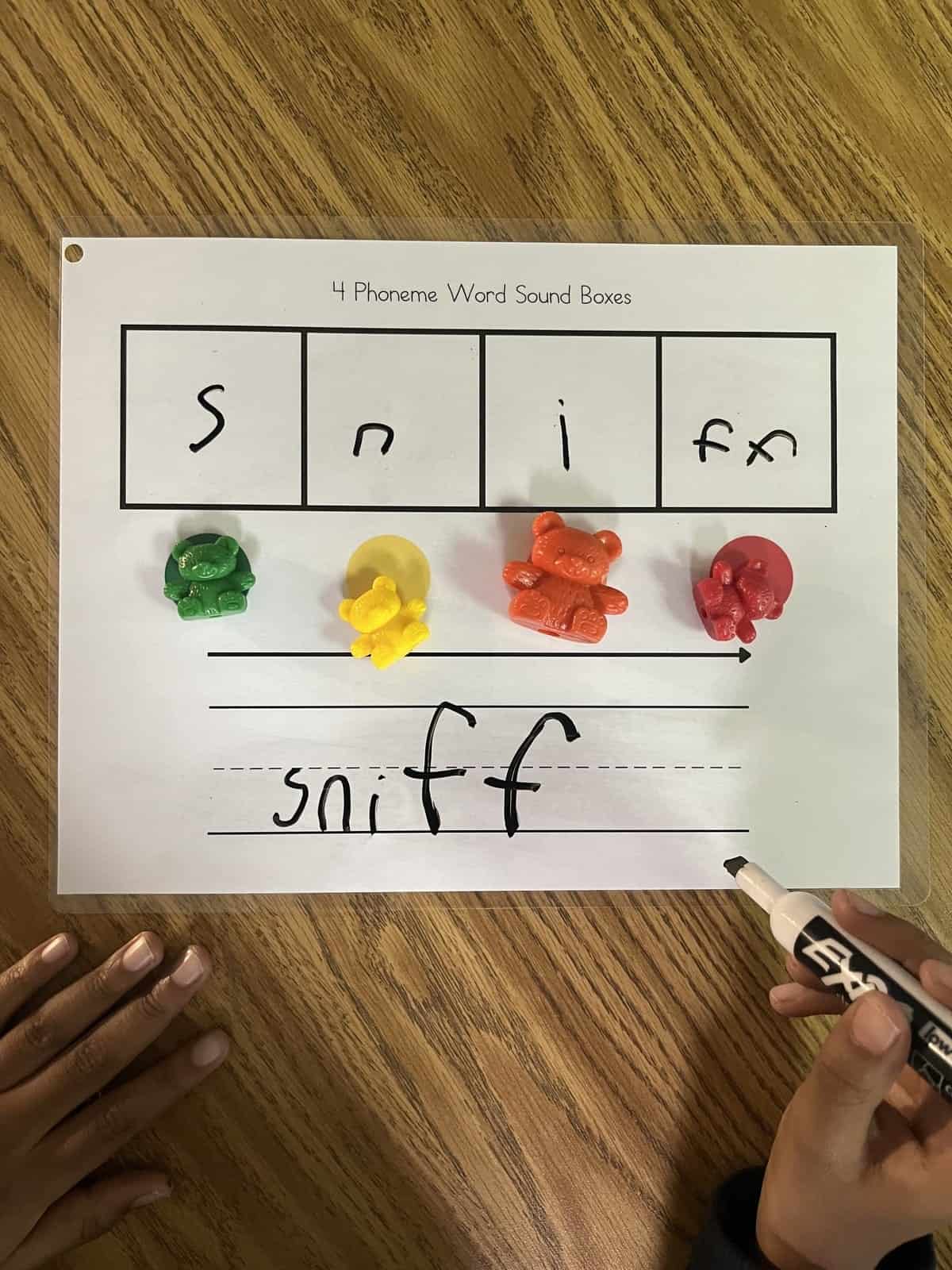
Step 2: Explicitly teach the rule.
In our phonics notebooks, students title their page “FLOSS + Z,” then write the rule, and then write example words that follow this rule.
Then, they draw a picture of the class doing the floss dance together.
We pull out our multi-sensory sound boxes and map the word “FLOSS.” Double letters will go in one Elkonin box, because they only make one sound.
We practice this a bunch of times using with various FLOSS words from the word list below.
You can also pair a fun read-aloud book: The Very Help Floss Rule. It’s adorable and gives plenty of good examples of FLOSS words.
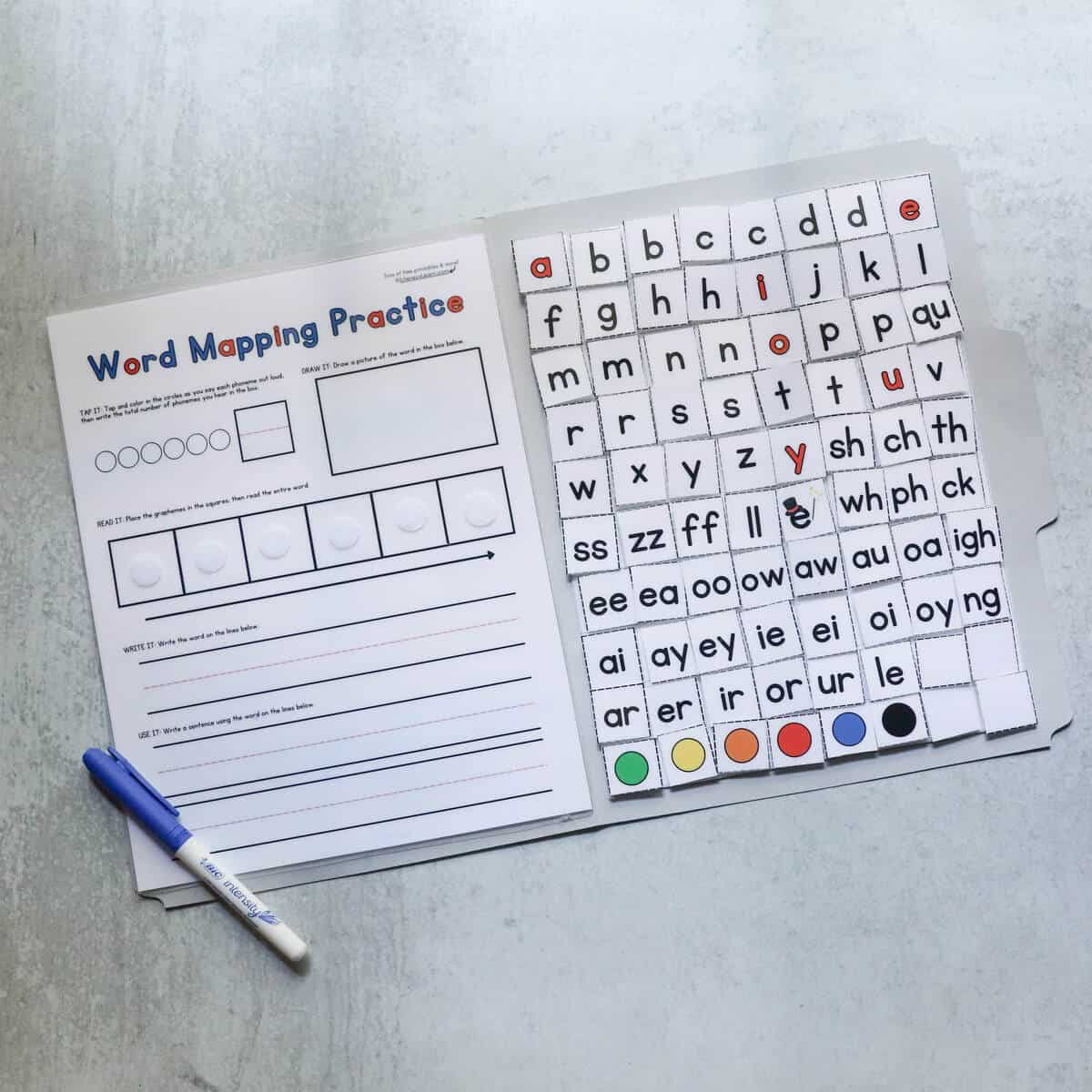
Step 3: Practice!
After a bit, be sure to throw in some other words that do not end in F, L, S, or Z to see if they can actually apply the rule.
Throughout the week, we practice reading and spelling FLOSS words so the concept becomes firm.
Some ideas include playing FLOSS Bingo, reading decodable sentences and decodable books, doing word chaining, and engaging in other games like phonics read and roll.
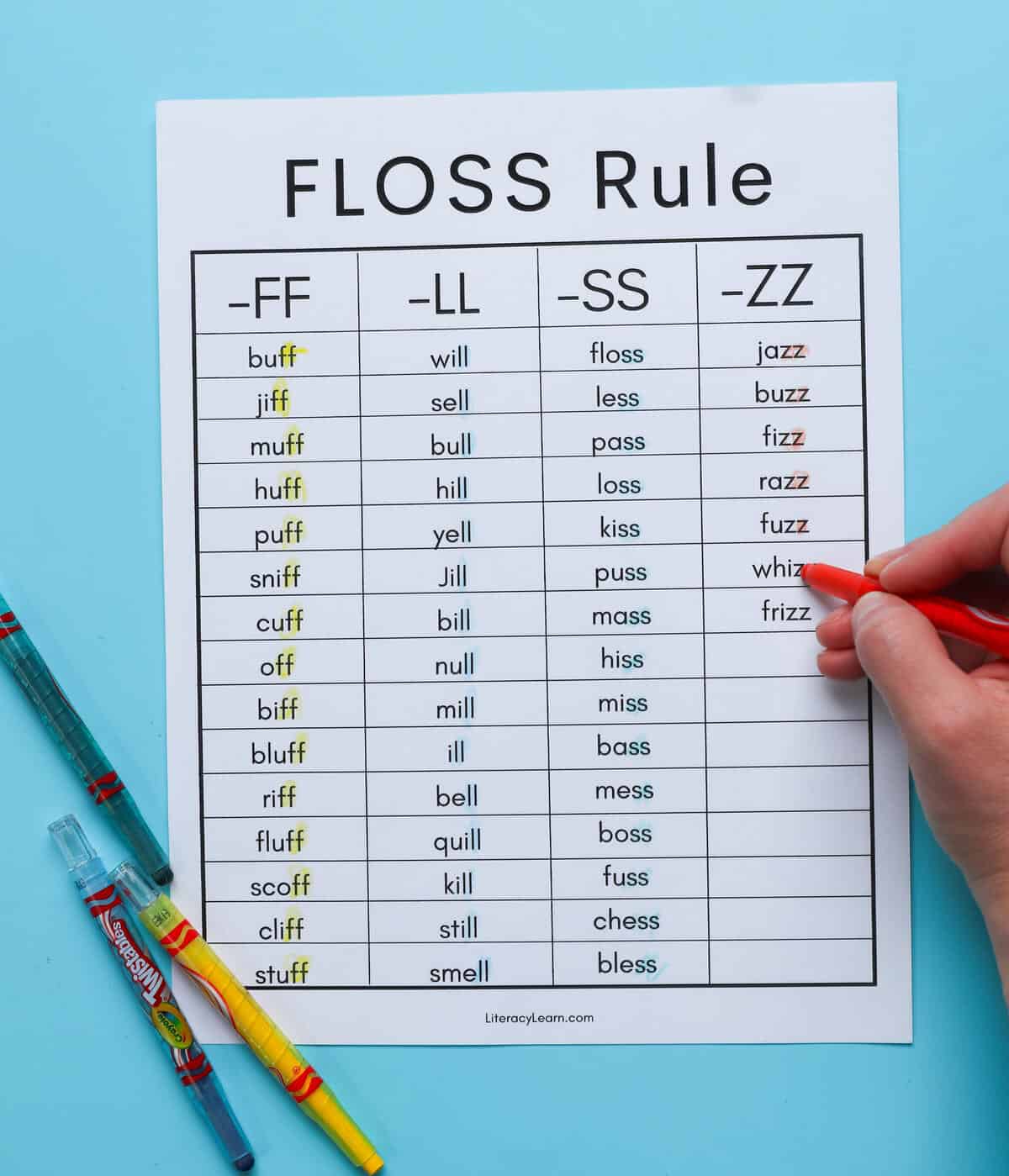
📄 FLOSS Words
👉 Scroll to the bottom for a one-page printout of the most common examples of FLOSS words:
- miss
- mess
- mass
- hiss
- boss
- bass
- puss
- pass
- kiss
- fuss
- chess
- floss
- off
- jiff
- buff
- cuff
- muff
- puff
- scoff
- sniff
- biff
- huff
- stuff
- bluff
- fluff
- cliff
- whiff
- ill
- Jill
- bell
- bill
- fell
- fill
- quill
- jazz
- razz
- buzz
- fuzz
- fizz
Important Note: There are other words that follow the FLOSS rule but are intentionally not included on this list.
👉 Words with -all (ball), -oll (roll), and -ull (pull) are not included because the vowel sounds change slightly, like in glued sounds. Choose the words you introduce to students carefully and be sure they only include pure short vowels.
For more words that cover ALL phonics skills (including nonsense words), check out our Ultimate Word Lists resource with over 3000 words organized by skill.
Expert Tips and Info
- Most scope and sequences teach the FLOSS rule after consonant digraphs but before consonant blends. Students should have a strong command of short vowels and all consonant sounds. It is usually taught at in the beginning of first grade.
- Since this is a spelling generalization, be sure to provide your students lots of opportunities to spell these words. And after you’ve taught the rule, spiral back to it and include it with your review concepts. You will also want to discuss some exceptions to the rule like gas and bus.
- Do some flexing between FLOSS words with short vowels and VCe words with long vowels. For example, pill vs. pile.
- Explicitly teaching the FLOSS rule is part of your Orton-Gillingham instruction. We recommend reading about more important spelling rules.

I put the FLOSS chart in my students’ phonics notebooks for easy referencing!
Related Resources
Download & Print
DOWNLOAD TERMS: All of our resources and printables are designed for personal use only in homes and classrooms. Each teacher must download his or her own copy. You may not: Save our files to a shared drive, reproduce our resources on the web, or make photocopies for anyone besides your own students. To share with others, please use the social share links provided or distribute the link to the blog post so others can download their own copies. Your support in this allows us to keep making free resources for everyone! Please see our Creative Credits page for information about the licensed clipart we use. If you have any questions or concerns regarding our terms, please email us. Thank you!
👉 More Phonics Resources: 50+ pages of free Phonics Word Lists.
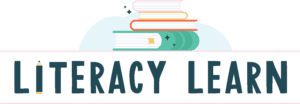
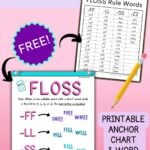

Always thank you for the charts. Helpful for my second, third, and fourth language learners.
I just finished my OG practioners certification, so I am exploring and learning more. Your website by far, is a favourite that I return to anytime I want to know more!
Jennifer,
Congrats on such an awesome accomplishment! We are so happy you’re finding the information and resources from Literacy Learn helpful. We are so happy that you will keep coming back!
Katie and Laura